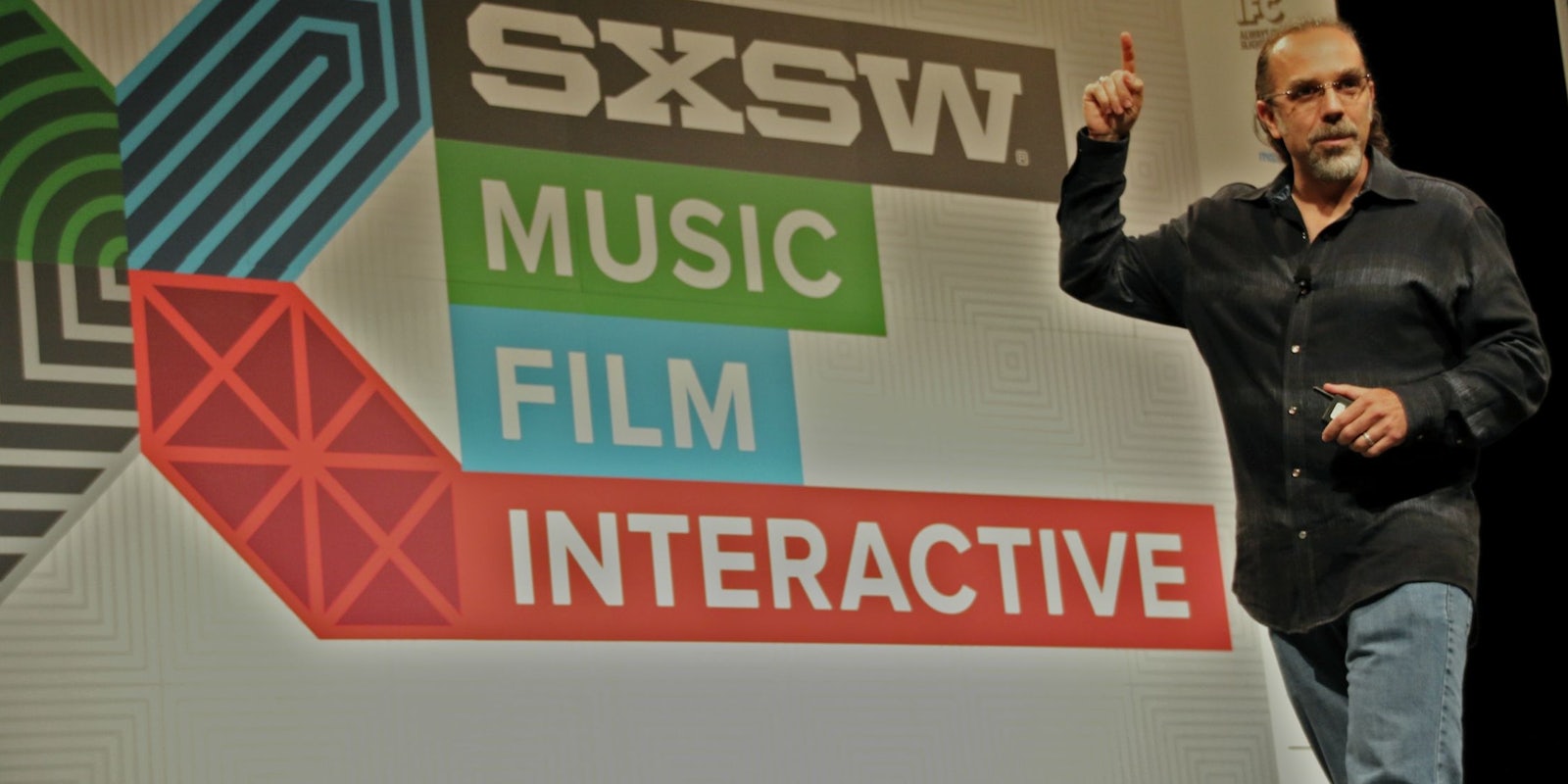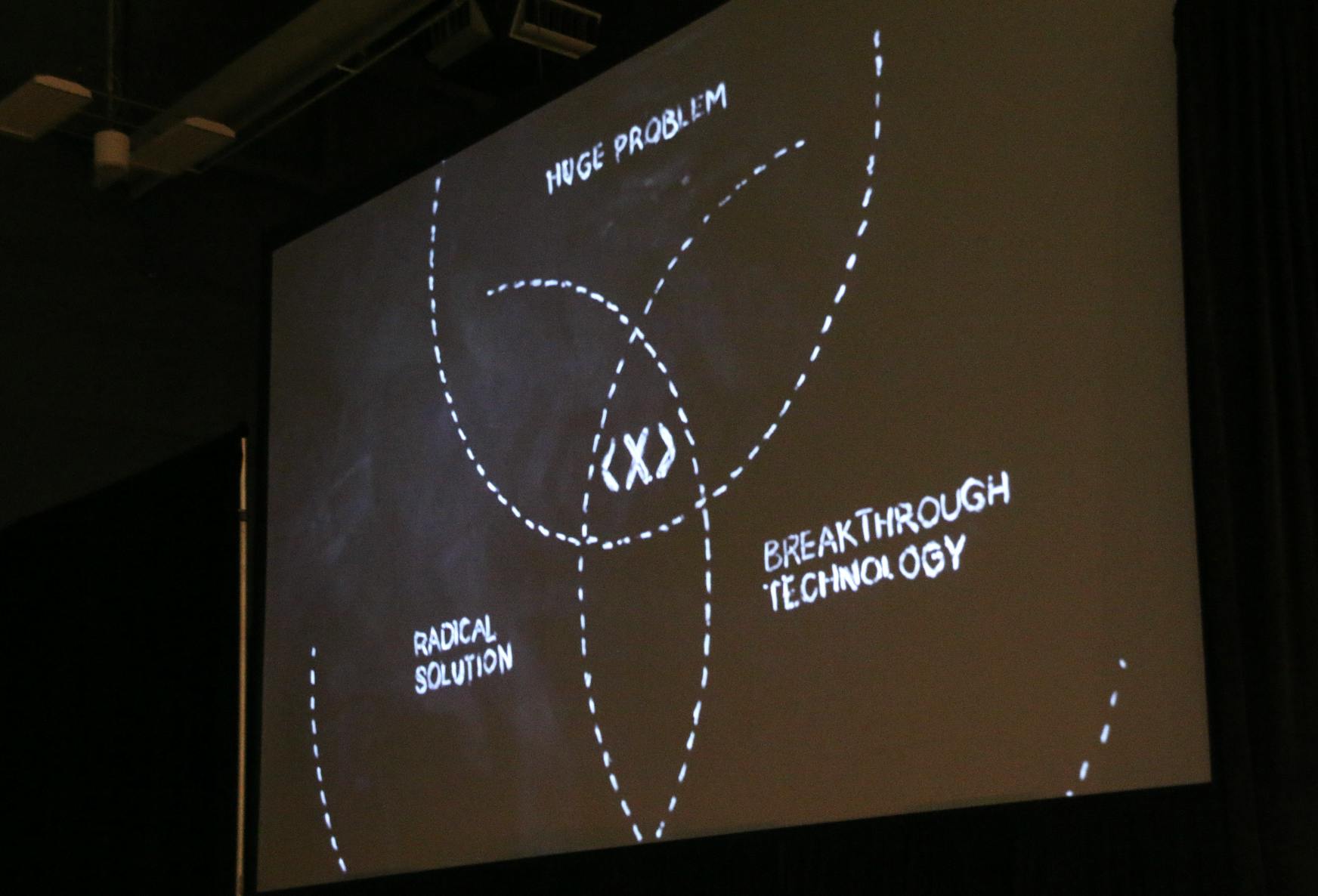At a South by Southwest steeped in virtual reality and dystopian interactive selfie exhibits, Google’s foremost futurist was right at home when he took the stage.
Google’s “Director of Moonshots” Astro Teller gave the final keynote of SXSW’s explicitly tech-centric portion, in order to proudly embrace the kind of failure that’s usually anathema to the tech industry.
Naturally, Google Glass came up.
“When we started the [Glass] project, this is one of the ones that it was really clear immediately that we were going to have to get out in the real world.” As Teller describes, Google X adheres to a two-part philosophy: Get an idea out in the real world as soon as possible and “fail as fast as you can.”
Rather than being the elephant in the room, Glass was an undercurrent woven throughout Teller’s example failures from the Google X “moonshot factory”: off-the-rails Loon balloons, false starts in its Project Wing drone delivery system, incompetent riders in driverless cars. In spite of its flashy entrance—skydiving, fashion shows, showy celeb appearances—Google Glass was ultimately a beta product. And that buzz set Glass up to fizzle out in the face of public derision.
“We made one great decision and one not so great decision about Google Glass,” Teller said. The great decision was Google’s Glass Explorer program, which invited a few thousand real world beta testers to wear Glass and provide every kind of feedback imaginable. “I’m really grateful for all of those Glass pioneers.”
“The thing that we did not do well, that was closer to a failure, is that we allowed and sometimes encouraged too much attention to the program.” Teller notes that battery life was a major challenge as was “[figuring] out how new social norms could be built.”
Google doesn’t readily admit to the failure of Glass, and for Glass Explorers who knew what they were signing up for on day one, it’s not evident that Glass failed at all. Glass, for all its marketing, remained a prototype until the day Google cut off pre-orders for the first iteration of Glass in January of this year.
Teller describes Glass as a project with “a lot of direction” that remains “hardly done,” in no way indicating that Google is jumping ship on its Glass efforts. Still, the challenges are myriad.
“I’m amazed by how sensitively people responded to some of the privacy issues,” Teller explains, expressing frustration about the backlash against Glass in public, given the prevalence of mobile video. “When someone walks into a bar wearing Glass… there are video cameras all over that bar recording everything.” If it were around a year ago “they’d be Meerkatting,” Teller joked.
“Society’s issues about privacy are completely legitimate,” Teller said. “I’m not making an apology for Google Glass. Google Glass did not move the needle… it was literally a rounding error on the number of cameras in your life.”
“It’s not about not having these bumps and scrapes—it’s about getting value from them,” Teller explained. “When I see that parade of mistakes in my mind’s eye… I just wish we could have made those mistakes faster.”
Photo by Taylor Hatmaker



